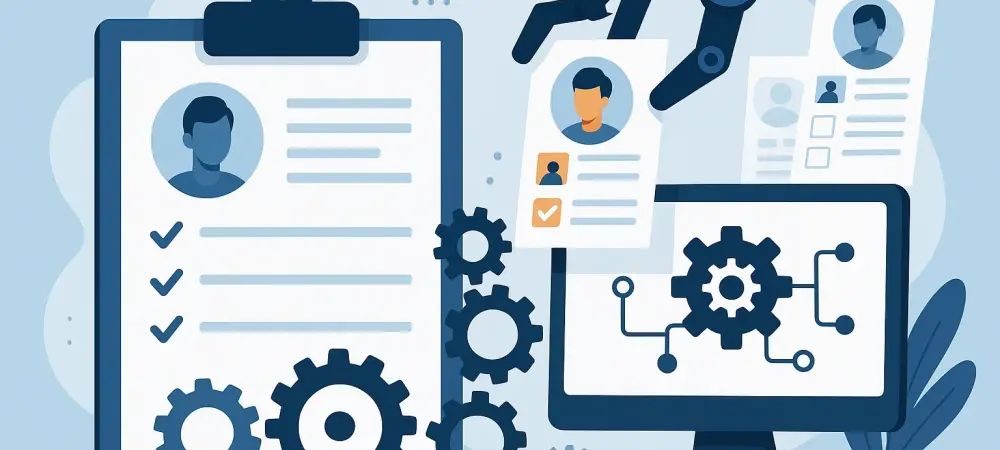In the evolving landscape of recruitment, the integration of automation technologies has sparked a profound debate concerning the roles of machines versus human judgment in hiring practices. One remarkable incident underscores this discussion—a consulting firm’s engineer was humorously offered his own job by a third-party recruiting agency. This mishap illuminated the risks of excessive reliance on automation, demonstrating that while technology facilitates speed and reach in sourcing candidates, it can sometimes miss nuances comprehensible only through human intervention. As businesses increasingly adopt AI-driven recruitment tools to streamline processes, enhanced effectiveness and unexpected failures coexist in this shifting paradigm, questioning if automation alone can truly replicate human discernment in evaluating potential hires.
The Promise and Pitfalls of Automation in Recruitment
Automation in recruitment promises unprecedented efficiency, revolutionizing how companies identify and shortlist candidates in today’s competitive market. By deploying AI-driven systems, businesses can rapidly parse vast amounts of data, leveraging algorithms to detect relevant skills and qualifications across digital profiles. This process inherently accelerates the initial stages of hiring, discarding numerous manual tasks traditionally consuming recruiters’ time and resources. However, while automation brings speed, it often lacks the nuanced understanding required to fully interpret diverse candidate experiences. A humorous yet telling example involved a firm inadvertently offering an employee his own job due to an overly automated, careless matching process. This incident exposed potential pitfalls, where reliance on algorithms without human oversight can lead to illogical, sometimes embarrassing, outcomes.
Despite automation’s capability to analyze data on a large scale, its effective application hinges on proper design and implementation. Critical factors include ensuring that systems use a diverse and expansive dataset to avoid biases that may inadvertently filter out deserving applicants. Moreover, the decision-making process in AI-driven recruitment largely centers on pattern recognition, missing qualitative aspects such as cultural fit, individual potential, or unique talents that may not align strictly with predefined criteria. These limitations underscore the essential role of human judgment for tasks requiring empathy, creativity, and relational insight—qualities machines cannot replicate. Consequently, a balanced approach, combining automation’s efficiency with human evaluative skills, seems paramount to successful and humane recruitment strategies.
The Need for Human Oversight in Hiring Practices
While automation provides logistical advantages, the necessity for human oversight in hiring cannot be overstated. In a uniquely revealing case, a recruitment agency erroneously identified a firm’s engineer as the top candidate for his own job vacancy, solely from an automation-driven process. This scenario exemplifies how dependent businesses have become on technology, sometimes at the expense of accuracy and rationality. The agency’s failure to verify and adjust the algorithm’s results with human insight highlighted a crucial gap—the need for recruiters to interpret data meaningfully to ensure job roles align with candidate profiles.
Incorporating human insight within automated processes helps mitigate risks that algorithms cannot address, such as understanding cultural fits or assessing the subtle nuances of interpersonal skills. Though algorithmic systems excel at filtering quantitative data, human evaluators can decipher complexities by asking probing questions and considering contextual factors technology may overlook. Furthermore, while AI can streamline initial screenings, final hiring decisions often require a personal touch, engaging with candidates to explore values and motivations that extend beyond resumes. Thus, the imperative for integrating human judgment involves maintaining not only the integrity of recruitment but also the depth of understanding essential for long-term employment success.
Balancing Automation with Human Judgment
The incident with the consulting engineer serves as a cautionary tale about excessively automated recruitment processes, emphasizing the challenge of balancing technology integration with human judgment. Companies striving for operational efficiency often rely heavily on automated solutions to scale recruitment, presenting risks when human oversight diminishes. Emerging technologies have yet to emulate human intuition and relational acumen accurately, making human involvement critical for validating technology-driven outcomes. Practice shows that successful recruitment processes should weave automation seamlessly with human evaluative skills rather than pitting one against the other. Automation can efficiently handle repetitive tasks and data analysis, while human recruiters prioritize nuanced judgment in candidate assessments. Employers should refine recruitment strategies by employing technology to handle data-centric aspects and reserving human insight for holistic evaluations. This harmonious blend of technological convenience and human discernment can enhance workforce quality and organizational culture, ultimately contributing to robust and sustainable hiring processes.
Future Considerations and the Role of Technology
The promise of automation in recruitment is transforming how companies identify and shortlist candidates in today’s competitive job market. By utilizing AI-driven systems, businesses can swiftly analyze massive datasets, employing algorithms to pinpoint pertinent skills and qualifications within digital profiles. This technology streamlines the initial hiring stages, removing many manual tasks that typically drain recruiters’ time and resources. However, automation, while fast, often misses the subtle interpretation of diverse candidate experiences. A telling incident where a company accidentally offered an employee his own job due to an overly automated process highlights potential pitfalls, where unchecked reliance on algorithms can lead to illogical or embarrassing results.
Despite automation’s ability to handle data extensively, its success depends on proper design and implementation. Systems must use diverse datasets to prevent biases that could exclude suitable candidates. AI-driven recruitment focuses on pattern recognition, often overlooking qualitative factors like cultural fit, potential, or unique talents. These constraints highlight the importance of human judgment for tasks requiring empathy and creativity—traits machines can’t mimic. Thus, blending automation’s speed with human insight is vital for effective recruitment strategies.

